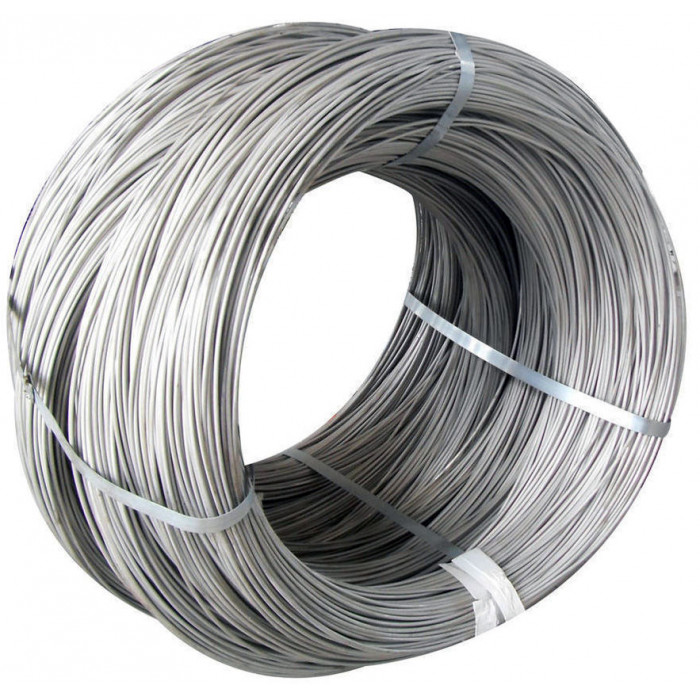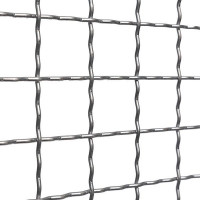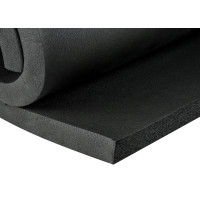Cherkasy steel wire, galvanized, hard-worked, spring st65g, st70, steel wire rod, knitting wire, thin steel wire
Currently, three main categories of steel wire are produced:
Low carbon steel wire
Alloy wire
High alloyed wire
The most popular variety is low-carbon steel, in which the carbon content is much lower than in other types of steel. For example, one of the main characteristics of this type of wire is a small sensitivity to elevated temperatures, for example during welding. In addition, we can name a high level of corrosion resistance, flexibility and toughness. Most often, steel wire from low-carbon steel is produced with a cross-sectional diameter that ranges from 0.2 to 8.0 mm. This material is produced by the method of repeated cold drawing.
steel wire products
Purpose of different types of wire
By appointment, as mentioned above, steel wire can be classified as follows.
knitting wire. This type of rolled metal is used most often for linking various enclosing structures or for the production of nails. This type of wire is also called "trading". It is always made from mild steel, and according to the nature of the external coating, it can be galvanized and non-galvanized.
Branded wire, as a rule, is used for the manufacture of consumer goods. Always made from high carbon steel.
Spring wire, as the name implies, is used for the manufacture of various types of springs by exclusively cold winding. The process of hardening is not subjected.
If we consider steel wire products, then the following can be given as examples: springs, nails, screws, rivets, screws, ropes, reinforcement, obstacles, fences.
description and varieties, sizes and markings, packaging and applications
Steel wire is used in various fields of industry, for household needs and artistic creativity. Steel products in the form of a cord or thread are distinguished by their main characteristics. Dimensions and performance properties set state and interstate standards.
Main varieties
The main features by which products are divided are:
The size and shape of the cross section;
Type of final processing;
Surface type;
The chemical composition of steel;
Application area.
According to the thickness, the products are divided into groups. Products of the first group are the thinnest, their thickness is less than 0.1 mm. The ninth group includes products with a cross-sectional size of more than 8 mm. Products in accordance with GOST are made of round, square, multifaceted and shaped profiles.
Finishing provides the required mechanical properties. To strengthen the mechanical strength and durability, the products are thermally treated: hardened, annealed and stabilized.
According to the type of surface, the products are divided into coated, unfinished and finished. Zinc, copper, aluminum and brass are used as steel coatings. For finishing, the surface is ground, polished or etched.
Labeling and packaging
Heat-treated steel wire with a cross section of 0.85 mm is designated: Wire 0.85 - O - H - GOST 3281–74.
Thermally untreated wire with a cross section of 1.4 mm of the second group with zinc coating of the second class is designated: Wire 1.4 - II - 2Ts - GOST 3281–74.
The wire is produced in coils and coils. Winding is carried out without tangling turns, laying consecutive rows that provide free unwinding. Up to three lengths are allowed in a spool, and a skein must contain only one length.
Products are supplied in coils, coils or bays. Coils of only one batch can be tied into bays. Each batch is provided with a label indicating the symbol according to GOST, the name of the manufacturer and the stamp of acceptance of technical control.
Coils with a cross section of up to 0.5 mm are packed in oiled paper and stacked in boxes. Wire with a thickness of 0.5 to 1.0 mm is packed in paper and polyethylene film. Coils and coils of wire with a cross section of more than 1.0 mm can be supplied without packaging.
Typically, wire, such as copper and aluminum, is obtained by drawing (drawing) a workpiece (wire rod) through successively smaller holes, or by continuous casting and rolling. If it is necessary to remove oxides and plaque, before drawing, the workpiece is pickled in a solution of sulfuric acid or other pickling agents, after which it is drawn on drawing mills and annealed in special furnaces. Annealing makes it possible to obtain uniform mechanical properties of the wire along its entire length, as well as to increase its strength. There are non-sagging tungsten wires that are used primarily in lamps and electronics because they can withstand temperatures up to 2000°C. [11] In order not to damage the surface of the wire, the workingthe surface of the drawing bench is coated with grease. The finished wire is usually wound into coils and coils, which are convenient to transport and store.
The wire is produced with different surface: black, light, ground, polished. There is also a heat-treated wire: annealed, normalized, hardened. Steel wire can have a different anti-corrosion coating: galvanized, tinned, oxidized, varnished.
The wire is produced in various diameters (from tenths to tens of millimeters) and is used for the manufacture of electrical wires, hardware, springs, drills, thermocouples, electrodes, electronic devices, and decorative items.
Story
With the advent of the first technique, wire began to be considered the most sought-after and popular metal material. Initially, various methods were used for its production: it was forged and twisted thin strips of metal in the form of a spiral.
WireThese methods were used in ancient times by the Romans and Egyptians. Around the 6th century, a special board was invented that had conical holes for drawing wire. This method is considered the beginning of progress in production, and is attributed to the Vikings.
At present, the drawing method is used for the production of thin wire, and rolling is used for thick wire. During the process, the wire is passed through rotating rollers of the required diameter.
The wire produced in this way is called wire rod. Both methods make it possible to obtain a high quality wire with the same diameter along the entire length.
Types of steel wire
With the help of modern technologies, manufacturers today produce steel wire of various types. They differ from each other in several ways:
• steel composition; • method of production; • shaping, broaching or rolling are different; • hot or cold processing; • the absence or presence of a protective coating.
All data on the characteristics of steel wire are clearly indicated in GOSTs, which are strictly controlled. The company that produces the material must present all product information in detail and simply.
GOST 7372-79. The size of the rope wire varies from 0.3 ml to 3 mm. The manufacturer uses zinc as a coating or completely refuses it. The wire is used in the production of ropes and cables, aviation equipment, in ship and transport construction. The wire is produced in coils or coils, packed with paper, and on top with a polymer film.
GOST 15598-70. In terms of elasticity, the string wire can be normal or increased. With a material thickness of 0.77 mm, a special check is made to find irregularities on the surface. Wire is used to make strings for musical instruments.
GOST 285-69. For the production of barbed wire, zinc-coated steel wire is used, made of one or two strands. The piercing elements are made of the same material with pointed ends by winding. The size of the spike depends on the diameter of the wire. Another way to produce barbed wire involves the use of steel stabbing bands by crimping. Use material for fencing territories or objects.
GOST 6727-80. For the manufacture of wire VR-1, low-carbon steel is used, subjecting it to cold broaching. Product diameter is approximately 3 mm to 5 mm, no protective coating. Today, this type of wire is more in demand in the construction market. It is used in monolithic construction when strengthening concrete, building foundations of a building, interior floors. Also, the wire has found application during brick laying.
GOST 7348-81. During the production of VR-2 wire, carbon steel is used. It is used to strengthen concrete during the construction of prestressed reinforced concrete structures. The GOSTs specify the minimum deviations in thickness and the presence of dents that do not harm the mechanical properties of the material.
GOST 5663-79. The cold heading wire size is 3-6 mm. It has found its application in many areas. Various fasteners, self-tapping screws, screws, plug candles are made from it. Cold heading is a plastic deformation in the matrix without the use of additional heating. This method of manufacture makes it possible to ultimately obtain a material that meets a good characteristic.
GOST 3282-74. Cold drawing is used in the production of low carbon wire. If necessary, it is carried out several times. The wire can be coated with galvanized material or produced without a protective coating. To increase the elasticity of the material, heat treatment is possible. With the help of this wire, large loads are fastened in production, nails, chain-link mesh, grounding elements, garden tools and containers are made.
GOST 9389-75. The size of the spring wire reaches 60 mm. The cross-sectional shape is usually round, but may be hexagonal, tosquare, oval or trapezoid. The main positive characteristic of the product is its high resistance to metal damage accumulation. The wire has found its application in the engineering industry. Stud axles and springs are made from it.
GOST 2246-70. Welding wire is used as a soft electrode in welding devices or semiautomatic devices. For the production of the material, ordinary, copper-plated, aluminum or stainless steel is used. This is due to the fact that the material from which the electrode is made must be from the same material that is to be welded.
Polymer-coated wire is used in critical or corrosive environments. In this case, PVC (polyvinyl chloride) is used as a coating. Accordingly, the price of this product increases. To increase the resistance of the wire to sudden temperature changes, HDPE (low pressure polymers) is used for the protective coating. Also, the wire is coated with powder paints, due to which the thickness of the material becomes smaller.
No questions about this product, be the first and ask your question.



